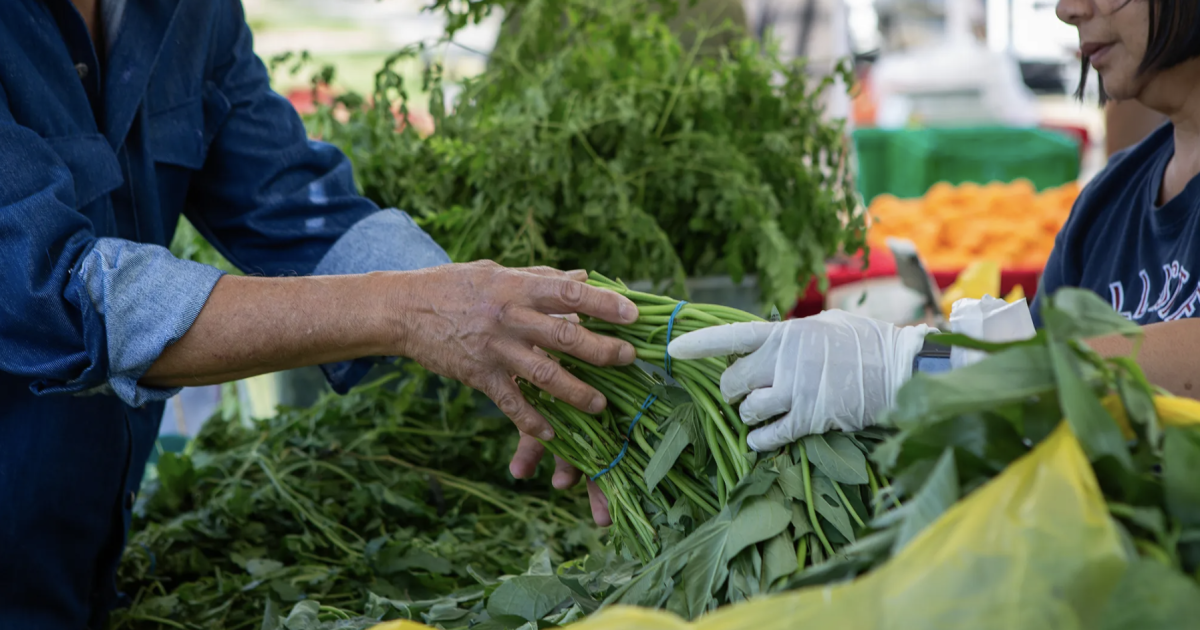
Asians report the worst access to food that’s both healthy and fits their palate, according to the first study in Los Angeles County to drill down on nutrition insecurity.
Researchers at USC found that the county’s Asian residents were more than twice as likely to be nutrition insecure than white residents.
What is ‘nutrition insecurity’
Nutrition insecurity is increasingly recognized as critical a problem as food insecurity – when people don’t have the money to buy enough food.
By contrast, nutrition-insecure people may be able to afford their groceries but have trouble getting healthy food that meets their cultural, religious or dietary needs.
This can result in people turning to processed food with more fat and empty calories, which then contributes to bad health outcomes ranging from depression to diabetes.
“We’re really understanding now that poor nutrition has so much to do with the food environment that you’re in, as opposed to folks making bad health choices,” said Kayla de la Haye, who leads USC’s Institute for Food System Equity.
In search of bok choy
The study didn’t delve into why Asians had the most trouble getting healthy food. But de la Haye noted even in a place as diverse as L.A. County, some Asian residents live in areas where their preferred food and ingredients are not easily available.
Take Chinatown. The last several years has seen Asian supermarkets close or leave the neighborhoods, forcing its older residents to adapt to how they get groceries.
“They might have to travel further,” de la Haye said. “Or the types of foods they’re looking for might not be as available to them.”
Leaders of local food equity organizations were not surprised by the study’s finding.
Alba Velasquez, executive director of the Los Angeles Food Policy Council, said she had only to look to full-service grocery stores to see the problem: They don’t carry an extensive range of Asian produce and ingredients.
“Japanese radish, bitter melon, bok choy, taro, eggplant,” Velasquez said. “When we think of access to healthy food, unfortunately it’s not touching on these culturally-relevant foods.”
Improving nutrition
Velasquez says the study underscored the need to ensure Asian fruits and vegetables are included in food assistance programs – the work of organizations that focus on Asian American and Pacific Islander communities such as API Forward Movement.
Another way to boost access to healthy food among Asians is to promote farmer’s markets and provide language assistance at them. That’s what Hunger Action Los Angeles has done with a weekly market in West Adams that’s popular with Korean seniors.
Bilingual staff help the customers with their CalFresh benefits, the state’s version of the federal Supplemental Nutrition Assistance Program, or SNAP, said Frank Tamborello, Hunger Action’s director.
“Our Korean volunteers working at the market say that a lot of the folks are very isolated,” Tamborello said. “They’re monolingual. They don’t have other family that are still in the US.”
Other key findings
The study, recently published in The Journal of Nutrition, surveyed more than 1,000 people in 2022. It also found:
- 24% of county residents were food insecure and 25% were nutrition insecure. Those who were both food and nutrition insecure represented 14%.
- Hispanic residents were twice as likely to be nutrition insecure than white residents.
- Adults 40 and under had the highest rates of nutrition and food insecurity of any age demographic.
Tamborello said the study’s findings are in line with the upward trend in food insecurity.
“Healthcare costs are high and rent is high — those are the main things that are affecting access to food,” Tamborello said. “And now on top of that, you have inflation.”
Have a question about Southern California’s Asian American communities?
Josie Huang reports on the intersection of being Asian and American and the impact of those growing communities in Southern California.
Source: laist.com




















Add comment